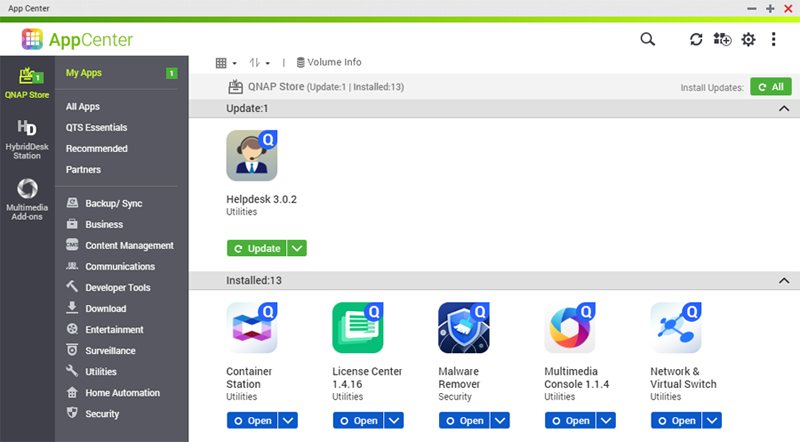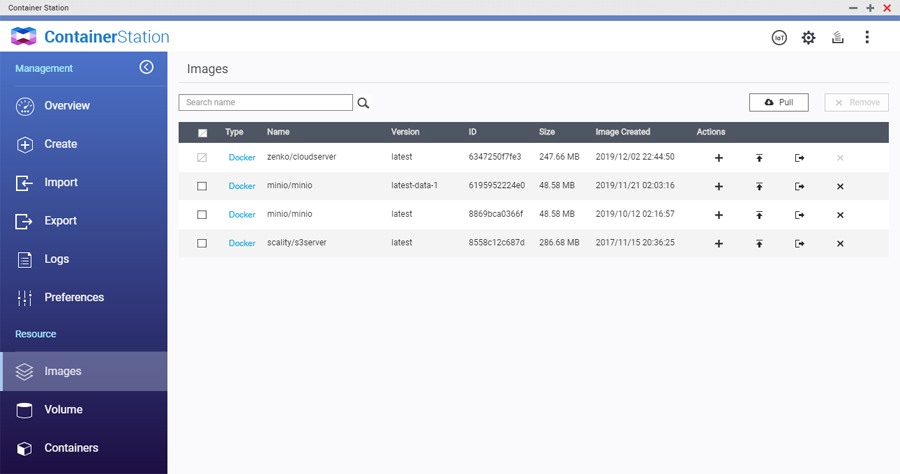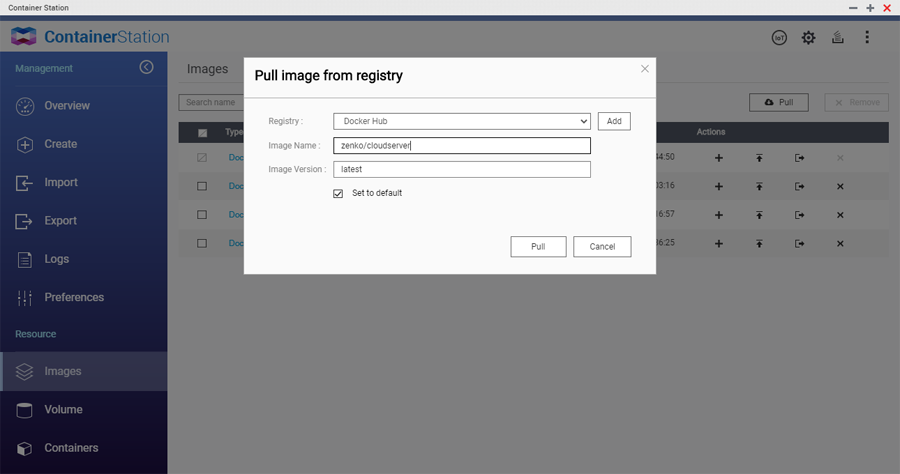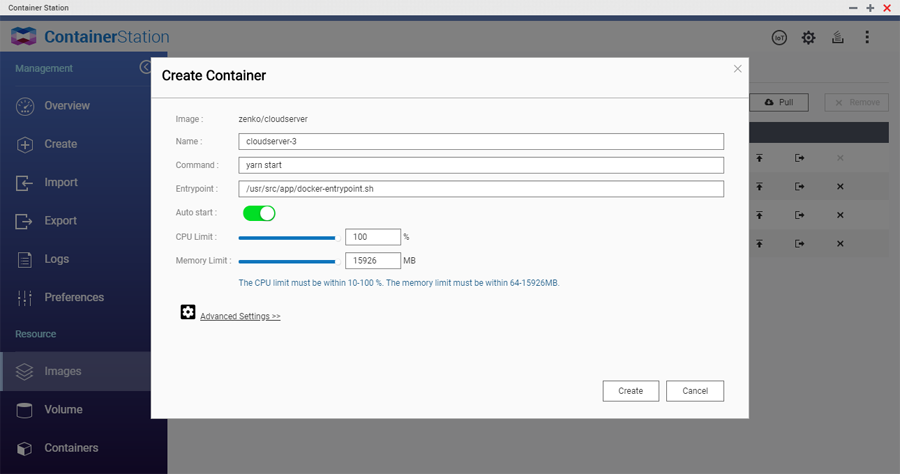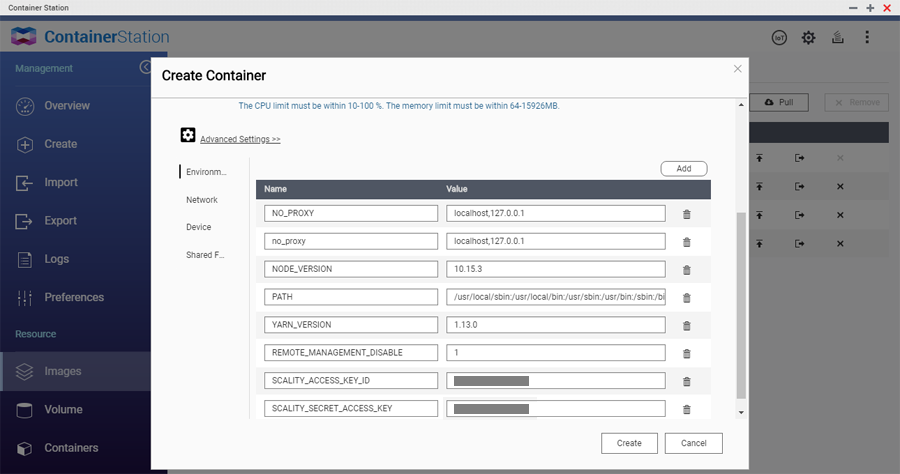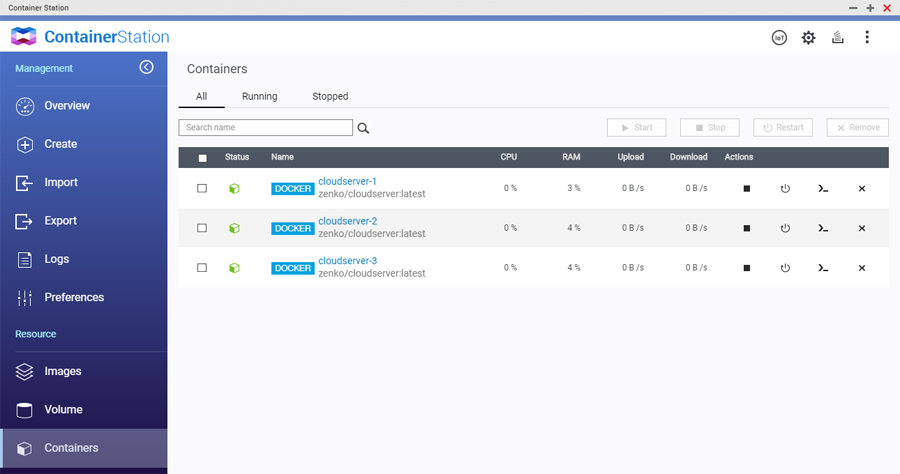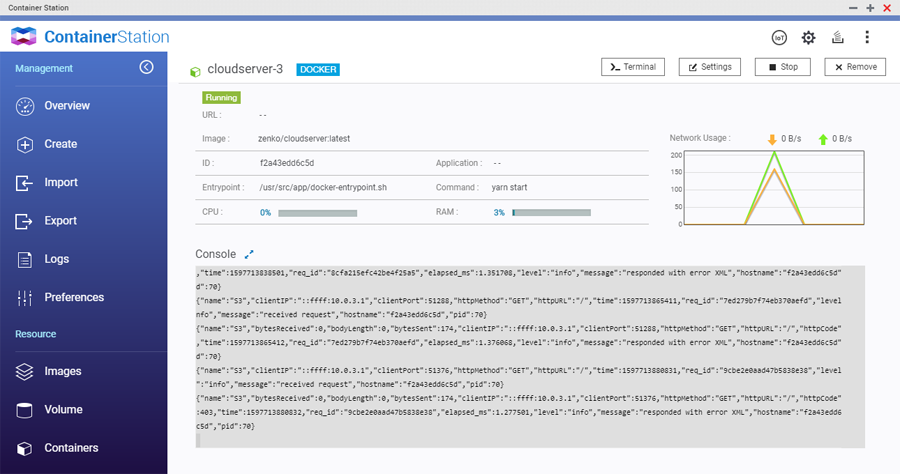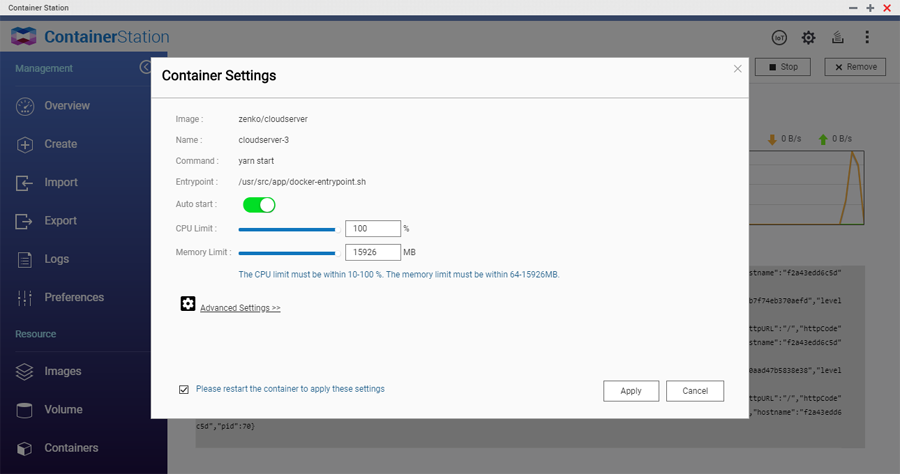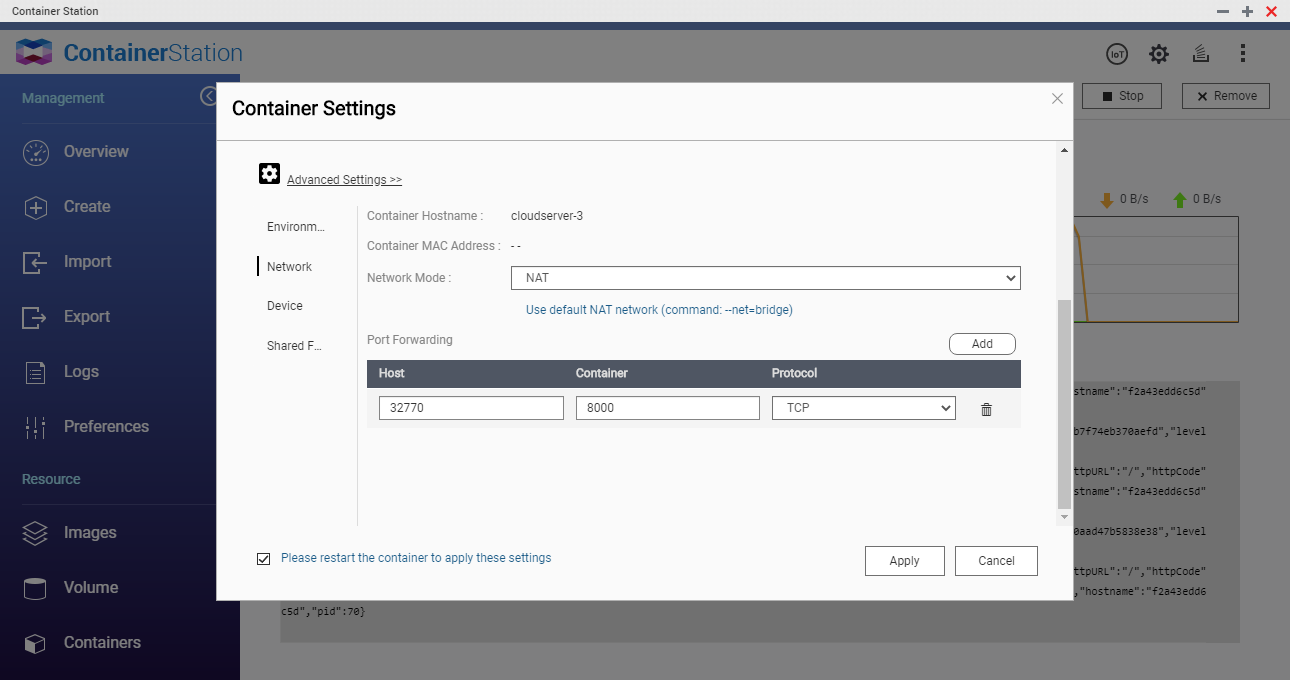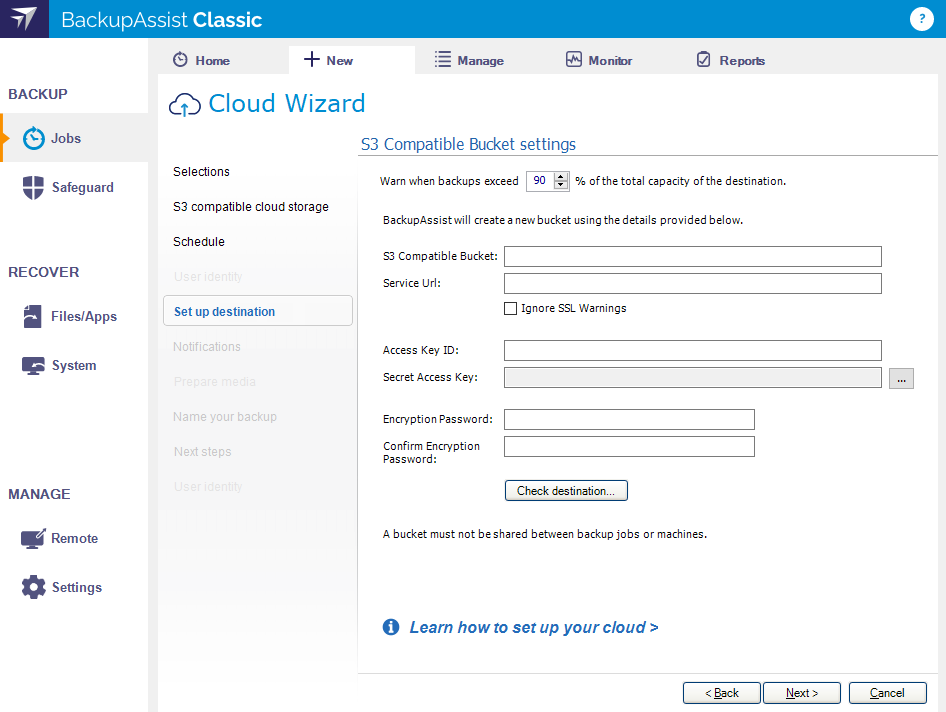BackupAssist Cloud Backup jobs include an option to back up to S3-compatible storage. The storage can be a cloud service or your own private cloud.
This guide explains how to back up to a private cloud destination using a QNAP NAS and Zenko CloudServer software.
The following technologies will be used for your private cloud
- QNAP NAS - a network storage device that will be used to provide physical storage and run Zenko CloudServer.
- Zenko CloudServer - an S3-compatible cloud storage application. It will be used to set up S3 storage on the QNAP NAS.
- BackupAssist Classic will be used to create cloud backups and save them to the S3-compatible cloud storage.
Create a new container to run the Zenko CloudServer software
These following steps explain how to set up S3-compatible storage on your QNAP NAS using Zenko CloudServer:
- Log into the QNAP NAS management portal as administrator.
- Open App Center.
- Open Container Station.
- Select Images from the side menu.
- Click Pull.
-
Type
zenko/cloudserverinto the Image Name field. -
Click the Pull button.
- Click the + Action next to zenko/cloudserver.
- Type a name for the container into the Name field.
- Click Advanced Settings.
- Select Environment on the Advanced Settings side menu.
- Click Add 3 times. This will add 3 empty fields.
- For entry 1, enter
REMOTE_MANAGEMENT_DISABLEinto the Name field and set the value to 1. - For entry 2, enter
SCALITY_ACCESS_KEY_IDinto the Name field. Enter a secure code into the value field. - For entry 3, enter
SCALITY_SECRET_ACCESS_KEYinto the Name field. Enter a different secure code into the value field. - Click Create.
- Review the summary message and click OK.
- Select Containers from the left menu.
- Click on the name of the container. This is the name you provided for the new container.
- Make sure the container has started.
This will open the Pull image from registry dialog
The dialog will close.
The next steps will set an environment variable to allow standalone use of the storage. For more information, see this Zenko resource.
The next 2 entries are to be used to enter security credentials. These should be unique and can use letters and numbers.
We recommend using a password management tool to generate and save these codes.
Find the port used by the container
Now that the private cloud storage is ready to use, we need to look up the port. This will be used for the BackupAssist URL, and the port could be different each time the container is run.
To find the port:
- Select Containers from the left menu.
- Click on the name of the container. This is the name you provided for the new container.
- Click Settings.
- Select Advanced Settings.
- Select Network from the left menu.
- Note down the Host port.
- Now that you have the Host port, you can Cancel out of the settings screen.
This is the port BackupAssist will use to connect to the container. The port is different for each container you create. The “internal” port is 8000, which is automatically configured by the docker image.
The Zenko CloudServer storage is now ready to be used as an S3-compatible backup destination.
Create a BackupAssist Cloud Backup job
Now that you have S3-compatible storage on the QNAP, you can back up to it using BackupAssist.
Create a Cloud Backup job as documented on the Cloud Backup page, and select S3-compatible cloud storage in the Destination media step. Then use the Set up destination step to enter the Amazon S3 Compatible Bucket settings as explained in the Cloud backup page.
Use the Zenko settings as follows:
- For the URL, use the IP or domain name of the NAS device and the port noted in step 4 of the find port section. For example, 192.168.1.2:32770.
- The connection is not SSL by default so tick Allow insecure connections.
- For the Access Key ID and Secret Access Key, use the keys you entered into the environment fields in steps 14 and 15.
You can now run the Cloud Backup job and save backups to your private cloud storage.
To learn more, see Zenko's documentation.
To learn about ways to check your storage security, see Zenko's blog article.
